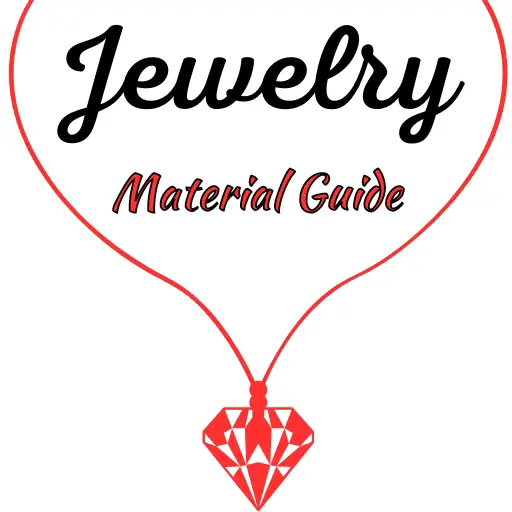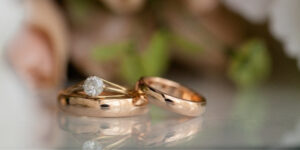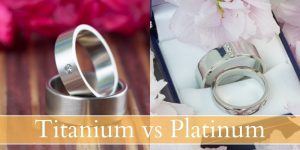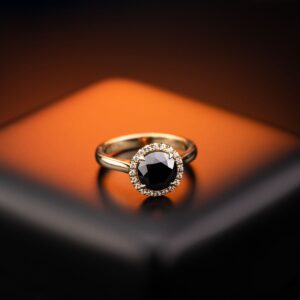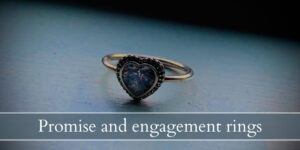Engagement rings are meant to be worn for as long as possible, ideally for the rest of your life. This means whatever kind of metal your engagement ring is made of, it has to be durable, not tarnish, look great with a diamond or gemstone, and also be somewhat affordable. If you’re not the one wearing the engagement ring, and are planning to surprise your loved one, this choice becomes a bit more difficult, so let us help.
Best metal for engagement rings
The absolute best metal for an engagement ring is platinum because it does not tarnish, it is very durable and tough, and has a white color and sheen that is easily paired with any diamond or gemstone and compliments any fashion sense. Platinum is also very easy to find at jewelers and retailers as it’s become a somewhat common jewelry metal so finding the ring you want should not be too difficult.
Second-best metal for engagement ring is any 14k gold, be it white, yellow, or rose. This is actually more common than platinum because it’s much more affordable, so you will see many options in white and yellow gold, less in rose gold. It’s not as strong as platinum though.
Third-best option is palladium. This is a tougher metal but very rare and very expensive, so if you find it do keep it in mind. It’s on our third spot only because it’s such a hassle to find it and work it into a ring.
Now let’s explore each of these options in more detail.
1. Platinum is the most durable and precious metal for engagement rings
Platinum is excellent for engagement rings, wedding bands, and any jewelry you might want to wear every day because it:
- does not tarnish
- is hypoallergenic
- is very tough, will not bend or scratch easily
- still has that white look like rhodium-plated gold
We’ve set platinum as our top pick because it’s really the perfect combination between a very tough metal that will last a literal lifetime without twisting out of shape, getting overly scratched, or tarnishing and corroding. It’s got the best of everything, but it’s a bit more expensive than the typical 14k gold ring (almost double).
2. Any 14k gold is also good for engagement rings
Gold is always a great option for any sort of jewelry, and it has been for centuries now. The reason we didn’t pick it as the best metal is because it’s always softer than platinum. But we do often see engagement rings and wedding rings in 14k gold, and for good reason. Not only is it beautiful it’s also quite durable. All 14k gold is durable, but less than platinum or palladium.
You might be wondering why we haven’t mentioned 18k gold yet. The trouble with it is that it’s not as strong as 14k gold. It’s still good for jewelry, but when it comes to daily wear it will get more scratches. You see gold karats reflect how much pure gold is in the alloy, so 18k gold (75% gold) has more pure gold than 14k(58,3% gold) so it is a bit softer.
There are white gold, yellow gold, and rose gold options you can take. You should know that white gold is always rhodium-coated; that perfect white sheen is not its real color. In time the rhodium coating will scratch off (this takes years) and you will notice the ring is, in fact, very light yellow. It’s called white gold for how white it appears when compared to yellow gold.
So, all 14k gold options are great options for engagement rings as well. Not as good as platinum in the long run, but they come pretty close.
3. Palladium is good, strong, but very rare and expensive
Palladium is, in fact, a stronger and more durable metal than platinum, and gold. So why is it third place ? It’s amazingly difficult to try and find this metal at any jeweler or retailer. These rings are not common at all, and working with palladium is difficult precisely because of how strong and unyielding it is.
When and if you do find this kind of metal in an engagement ring, you’ll know it’s a very sturdy ring, and a heavy one at that. It will be strong, heavy, and have a bright white shine to it. And like platinum, it does not tarnish and is hypoallergenic.
What metal looks best with diamonds ?
Diamonds look their best in white metal, because there is no other color to influence the diamond color, such as yellow gold or rose gold. Also, a white metal diamond setting (the metal holding the diamond) will make it appear white still. Overall a great option for diamonds, especially if you want your diamond to be crisp white.
Only the colorless and near-colorless, high clarity diamonds will work in these settings. Examples include platinum, palladium, rhodium-coated white gold.
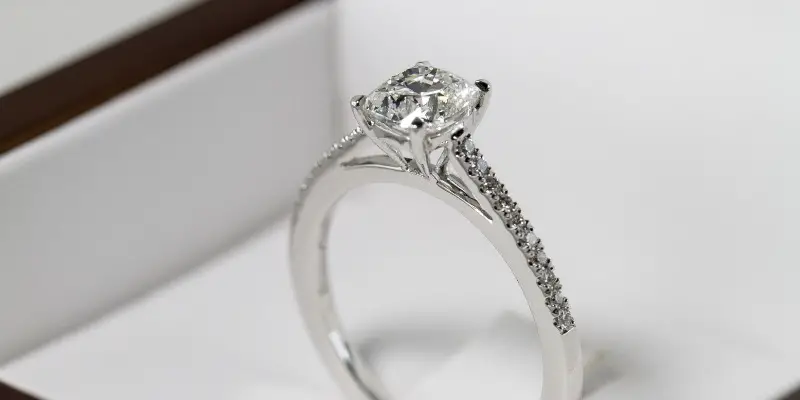
Yellow and rose gold are also a great fit for diamonds, and you can go a bit lower in diamond color grade if needed or use a white metal setting for a colored metal shank.
Whichever metal you choose for your diamond keep in mind that it needs to be a very strong, very durable metal that will not wear off in time. The prongs or bezel holding your diamond in place need to stay put for decades, to make sure the diamond doesn’t fall out. It’s best to invest in a very good metal for your engagement ring, since it will see a lot of wear and tear.
Should engagement rings be silver or gold ?
In terms of color engagement rings are commonly seen in white metal such as white gold or platinum, at least in the past few decades. Before that, especially before the 2000s the typical engagement ring was yellow gold.
So if you’re going for a more modern look, then a white metal is the way to go. If you’re looking to evoke a traditional feel, or maybe even go vintage, go for yellow gold. If ultra-feminine and floral is your type, then rose gold is a beautiful option that looks amazing with white diamonds. There’s something very delicate and lacy about white diamonds in rose gold.
Read also: Do Wedding Bands Have To Match ?
Is silver good for engagement rings or wedding bands ?
Silver is not a great choice for engagement rings or wedding bands because it is a softer metal, it will scratch and bend out of shape easier than white gold or platinum. Silver also tarnishes quite strongly as the years go by, so unless that’s the look you’re going for, silver isn’t the best.
But, if you’re looking for a non-traditional engagement ring metal, or want something durable but not expensive try tungsten carbide, titanium, or stainless steel.
All three options are very tough, very strong, durable metals that will hold up to wear and tear much better than a silver ring. Engagement rings in these metals aren’t common, so you might want to think a bit outside the box , such as using a non-gemstone ring for an engagement ring or skipping it altogether.
As for wedding rings, tungsten, titanium, and stainless steel are great option and there are plenty of options to look at. And if you’re into patterned rings, you will easily find them in these three metals.
What metal turns your finger green ?
Any metal that is an alloy containing copper, zinc, or nickel and is directly touching the skin may turn your finger green. This includes all the gold alloys and sterling silver, but not everyone will have this skin reaction. The green or black stain on your skin is a reaction of the metals, a sort of corrosion cause by the oils on your skin, and sweat. Some may show a stain in a few hours, while others may show in a few days.
White gold may contain nickel and copper, for example, but it’s often coated with rhodium so your skin is protected. And it’s not always the same alloy for gold, for example some may sell 14k gold that does not contain any nickel at all, but instead contains platinum and a bit of silver, while others add in nickel and silver.
If you’re unsure you can either ask your jeweler about what’s in the metal alloy, or go with something 100% safe such as platinum, palladium, stainless steel, tungsten carbide, or titanium.

I’m the main author for jewelrymaterialguide.com. I started this site after we did tons of research before our wedding and noticed that there is information about rings, jewelry, and so on that is really hard to find on the internet.
